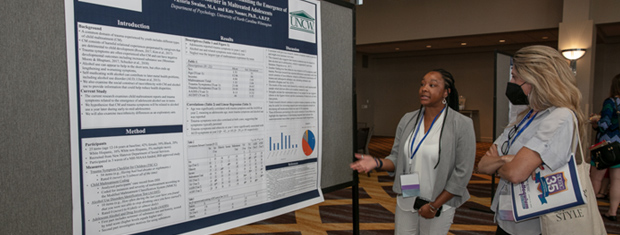




The APSAC Advisor is a peer reviewed quarterly news journal for professionals in the field of child abuse and neglect.
The APSAC Advisor provides succinct, data-based, practice-oriented articles that keep interdisciplinary professionals
informed of the latest developments in policy and practice the field of child maltreatment. It is designed to highlight
best practices in the field and publish original articles and current information about child maltreatment for professionals
from a variety of backgrounds including medicine, law, law enforcement, social work, child protective services, psychology,
public health and prevention in the U.S.
 If you wish to learn more about submitting an article to the Advisor, please click here.
If you wish to learn more about submitting an article to the Advisor, please click here.
This library contains Advisor issues dating back to the first issue in 1988. The most recent issue appears at the top.
Scroll down to select past issues by year and issue number. Once a publication appears in the box, you
can use the Enlarge button to open the document in a new window or tab (depending on how your browser is set up).
This will allow you to view the document with larger print.
To print a document, first use the Enlarge button to open the document in a new window or tab. Then use your browser's Print command.
To return here from a new tab, close the tab. To return from a new window, click your browser's Back button.
In the listing below, click on a year and issue number to see the articles in that publication.
2021 Number 1
A Look into the Mirror: Reflecting on Systemic Racism and Implicit Bias
Animal abuse and neglect do not occur in a vacuum, but rather are a part of a pattern of dangerous behavior that harms both animals and humans. Lawmakers are recognizing this connection and expanding child protection laws. This article encourages those working with at-risk families to recognize the connections between child and animal maltreatment and suggests ways of modifying practice and training.
Under the Influence: Fetal Alcohol Spectrum Disorders and the Biology of Trauma
In maltreating families, the neurodevelopmental effects of childhood toxic stress and prenatal alcohol exposure (ND-PAE) are often coexistent and interacting impediments to normal child development. The neural structures responsible for the brain’s responses to postnatal stress can be impaired by the toxicity of prenatal alcohol exposure. This preexisting damage may potentiate the influence of traumatic stress and adversity. As postnatal toxic stress and prenatal ND-PAE often coexist, and symptoms of each share many similarities, it can be easy to ignore one factor or the other, yet their combined effects are important to recognize. An appreciation of the neurologic substrates through which toxic stress is processed improves understanding of trauma’s consequences. Preexisting brain injury conferred by ND-PAE impairs adaptability (resilience) and should be taken into account during assessment and intervention.
A consensus has emerged among forensic interviewers that narrative practice rapport building, introducing the allegation with a “why” question about the reason for the interview, and eliciting allegation details with invitations (i.e., broad, free recall questions) constitute best practice. These methods are favored because they increase true reports with little risk of increasing false reports. We discuss how interviewers can maintain this balance with open-ended wh- questions designed to elicit details often missing from children’s narratives. Conversely, we show that closed-ended wh-questions and recognition questions (including yes/no and forced-choice questions) pose risks of impairing children’s productivity and accuracy, and we discuss how future research can find ways of eliciting important details with open-ended wh- questions.
Do Ethical Standards Apply to Forensic Interviewers?
This article examines current forensic interview practice in light of the American Professional Society on the Abuse of Children APSAC Code of Ethics (1997) for professionals in the field of child maltreatment. This examination reveals that forensic interview practice prevalent in many CACs, and considered best practice in many quarters, falls short of accepted ethical standards. Specifically, the strict, single-session-only interview format in which the interviewer is limited to a one-session interview fails to serve the best interests of the child and is therefore a breach of our professional ethics. This article describes alternative interview formats, including the variable-session and multiple-session formats that do meet ethical standards. It also compares forensic interview instruction on the use of multi-session interview formats provided by seven prominent training models.
If Odysseus were a Child Welfare Department Director
Politics play a significant role in the life of a child welfare director. When a new child welfare director comes on board, there is a period of cordiality and enthusiasm that generally prevails. This honeymoon period can pass quickly, and, to some extent, that's best. Politics in child welfare have also led to swift reactive actions to ‘fix’ a myriad of problems. The child welfare director is continuously dealing with this "between-a-rock-and-a-hard-place" situation.
The pivotal 1998 Centers for Disease Control and Prevention (CDC) and Kaiser Permanente ACEs Study found that adverse childhood experiences (ACEs) are common and associated with negative physical, psychological, and social outcomes. Since then, literature on ACEs has developed significantly, but there is still a need for robust strategies to prevent ACEs. The editors, Drs. Asmundson and Afifi (2020), and contributors of this book seek to close this gap by providing historical information on ACEs and childhood trauma, overviewing the current research related to ACEs impact and outcomes, discussing recent controversies and developments of the ACEs instrument, and guiding next steps for policy, prevention, and research. Central to this book is its relevance to diverse audiences with the shared mission to understand, treat, and prevent ACEs.
APSAC Advisor 33(1): Full Issue